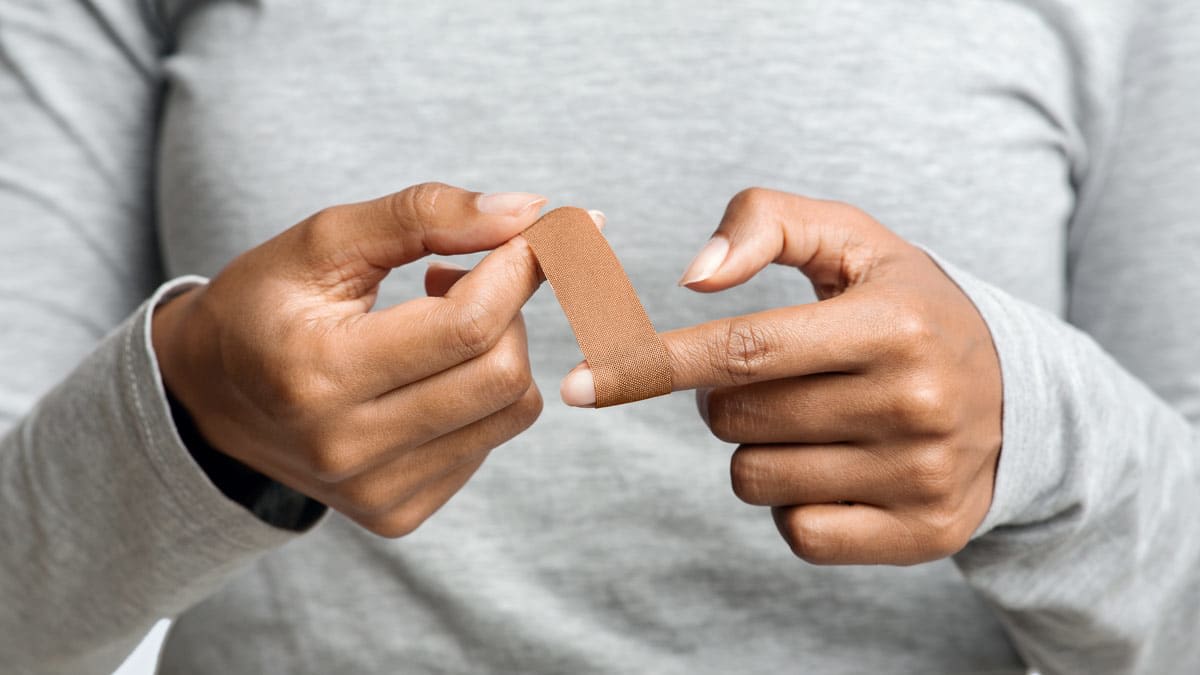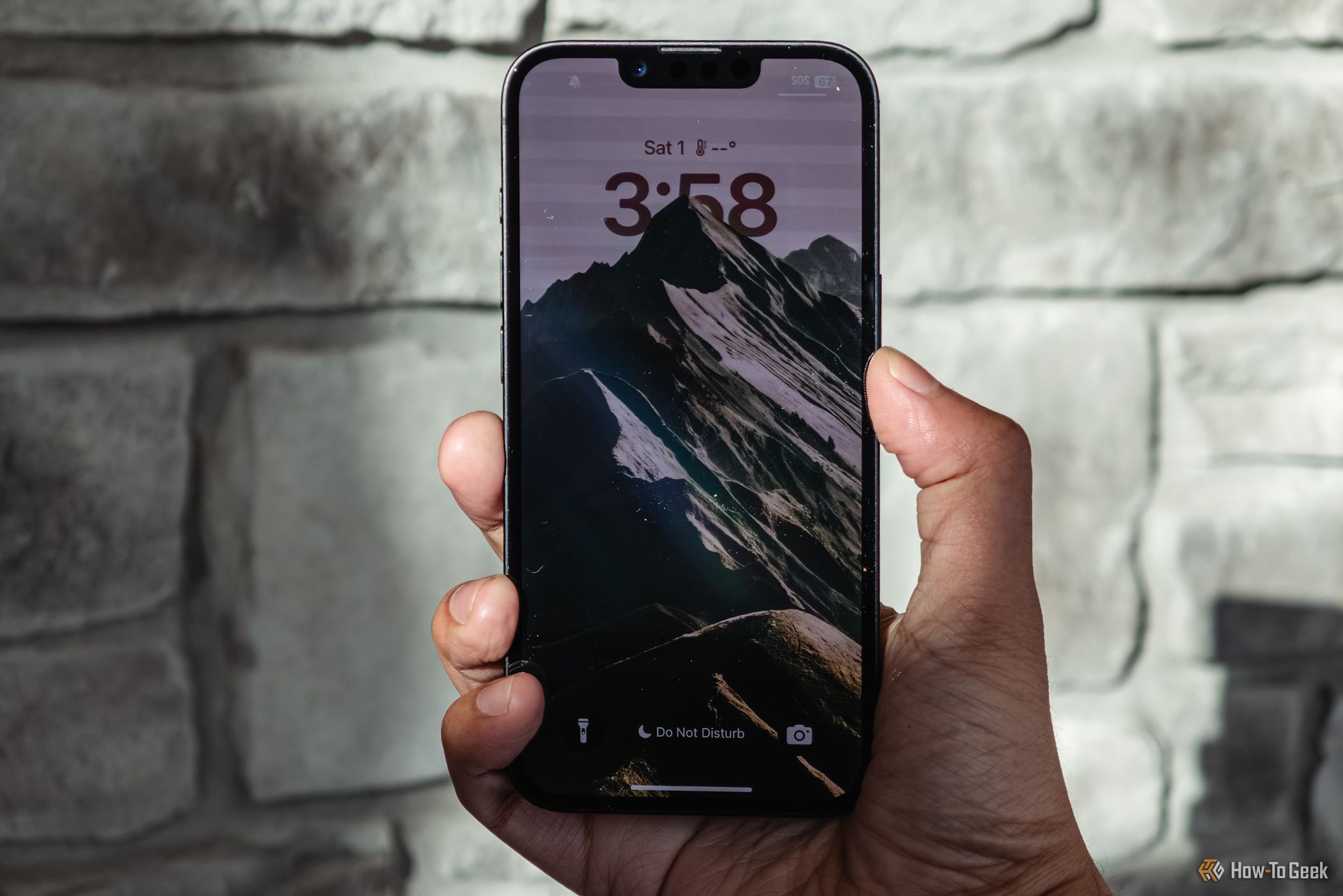You Could Be Treating Your Cuts the Wrong Way

Don’t “air it out.” Put down the hydrogen peroxide. Here’s what to do to prevent infection and hasten healing.
By Ashley Abramson
Cuts, or wounds that break the skin, are one of the most common injuries. They can vary in severity, but most minor wounds can usually be treated at home without any major problems. Still, whether you slice your finger chopping vegetables or end up with a paper cut when you’re opening the mail, it’s best to attend to even surface wounds as quickly as possible.
The right treatment can help prevent a skin infection and speed up the healing process. But certain popular practices may actually delay healing or make your situation worse. Below, expert-recommended steps to take when you cut your skin—plus a few things not to do.
1. Stop the Bleeding
Always wash your hands with soap and water before attending to your wound. Most mild and moderate cuts will stop bleeding on their own with gentle pressure applied to the affected area.
“Grab a clean towel or gauze and apply gentle pressure with your hands for 5 to 10 minutes,” says Julia Magaña, MD, associate professor of emergency medicine at UC Davis Medical Center. If you’re helping someone else, wearing gloves can help prevent the spread of germs.
What not to do: You may be tempted to lift the towel or gauze every few minutes to check on the cut, but avoid the urge. Doing so, Magaña says, can reopen the cut and cause more bleeding.
2. Wash Up
Next, “wash out the cut with regular lukewarm tap water and mild soap to remove potential bacteria,” says Neha Narula, MD, clinical assistant professor of primary care and population health at Stanford Health Care in Santa Clara, Calif.
Soap and water can remove small debris from the cut, but you can also use tweezers soaked in rubbing alcohol for small debris. After washing the cut, pat it dry with a clean towel.
What not to do: Don’t use anything but mild soap and water to clean a wound. That means you can skip hydrogen peroxide, rubbing alcohol, and iodine. “People thought these things helped reduce infection risk, but evidence shows they can be harmful and delay wound healing,” Narula says. “Just use regular old tap water or saline if you want to be fancy.”
3. Keep the Cut Moist
After bleeding stops and the cut dries, apply petroleum jelly to the area with clean hands. Moisture on a cut can help prevent infection by creating an extra barrier between the outside world’s dirt and the healing wound, says Jim Adams, MD, senior vice president and chief medical officer at Northwestern Medical Health Center and professor of emergency medicine at Northwestern University in Chicago. Moisture may also help minimize pain from a cut and prevent rebleeding, Magaña says.
To reduce the spread of germs, Narula suggests applying petroleum jelly from a tube rather than sticking your fingers in a tub.
What not to do: Antibiotic ointments such as Neosporin may help stave off germs. But studies show that topical antibiotics aren’t statistically more beneficial than a placebo, and the experts we spoke to say a growing number of people experience allergic reactions to Neosporin. Plus, keeping a cut clean with soap and water is generally enough to protect you from infection.
4. Apply a Bandage
Lastly, find an appropriately sized adhesive bandage to cover your cut. Gaping cuts may benefit from butterfly bandages, which Adams says gently pull the wound closed and assist with healing. If your cut is larger, try using medical tape to secure nonstick gauze.
Change the bandage whenever it gets dirty or wet, and at least once a day. That’s also a good time to wash, dry, and reapply petroleum jelly to your cut.
Most minor cuts heal on their own within a week or so, according to Narula. As a wound heals, it typically gets smaller and forms new skin over the injured tissue.
What not to do: “Airing out” a cut isn’t a good idea. Wounds should always be covered to protect them from infection-causing germs. “It tends to heal faster with moisture and a covering rather than just leaving it out in the air,” Magaña says.
When to See a Doctor
There are some cuts that need immediate medical attention.
Go to the emergency department if your cut appears jagged, it won’t stop bleeding after 5 or 10 minutes of pressure, you have a large piece of debris in the wound, or you were bitten by an animal or another human. Some deep cuts can sever an artery, which usually involves spraying blood and pulsating. In that case, apply significant pressure on the wound and call 911.
You should keep an eye on even minor wounds, checking regularly for signs of infection. Go see a medical provider if at any point you notice redness, pus, or swelling, or if you have ongoing or increasing pain. “The skin should be closing and you should be forming scar tissue or a scab over it,” Narula says. “If not, go in and see a medical provider.”
Consumer Reports is an independent, nonprofit organization that works side by side with consumers to create a fairer, safer, and healthier world. CR does not endorse products or services, and does not accept advertising. Copyright © 2024, Consumer Reports, Inc.
Source link











